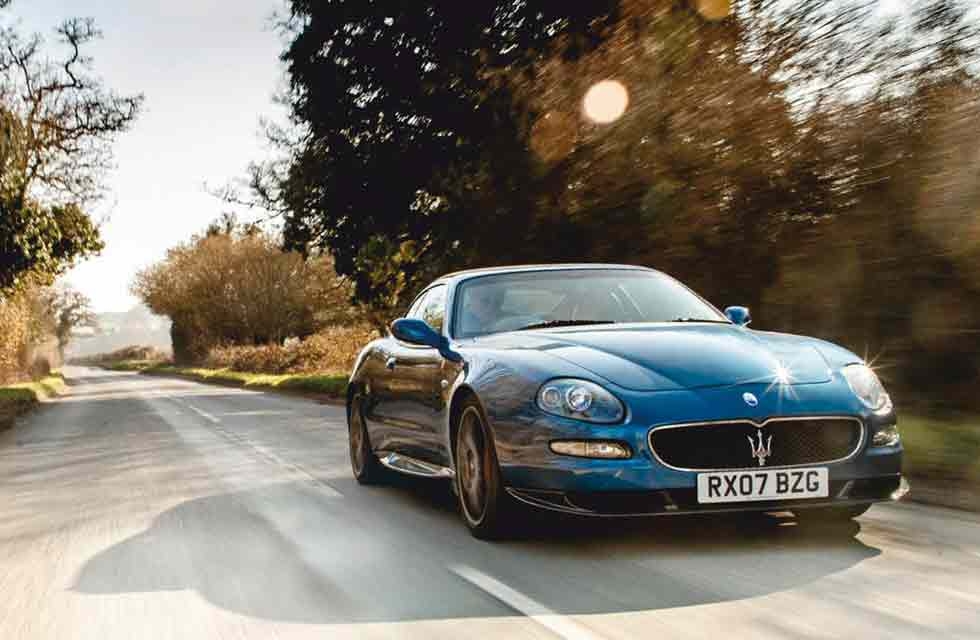
Cynical special or the best of breed? Maserati Gransport MC Victory. The Maserati GranSport MC Victory special edition was ‘inspired by the MC12’ – can you really feel the DNA? Words Nathan Chadwick. Photograpy Adam Shorrock.
…SELL ON MONDAY
How much Maserati MC12 found its way into the last-of-the line GranSport MC Victory? We sample one of 180 built to find out just that.
MASERATI’S VICTORY LAP GranSport meets racing inspiration
When you see run-out specials, it’s pretty clear what’s happening: a desperate last attempt to flog an aged horse before the new model comes in. Sometimes it’s tasteful, with all the extra options bunged in for the same price as a normal model. Sometimes it’s not, little more than a parts bin romp made even worse by a silly name. Ford, Rover and Vauxhall, I’m looking at you. Another theory is that the very best models are kept to the back of development. We can see this at Porsche, whose sauciest GT models fight on even after the new base model has taken its bow.

So what of the Maserati GranSport MC Victory you see before you? Built to celebrate the Trident’s MC12 victory in the 2005 GT1 Championship, it’s the last of a line that dates back to 1998. Could this be the ultimate Maserati Coupe?
‘IT’S THE LAST OF THE ERA OF TRULY SPORTS-LED GT MASERATIS’
Let’s look at some history. The first Maserati Coupe to take this form was styled by Giorgetto Giugiaro. Released in 1998, it was powered by an evolved version of the 3.2-litre, twin-turbo Maserati engine that also powered the Shamal and the Maserati Quattroporte IV. Though well received, with sales hugely boosted over the tiny number that had trickled out of Modena during the 1990s, there were some problems with the Coupe. The engine could be troublesome and the light steering felt at odds with the peaky twin-turbo delivery.
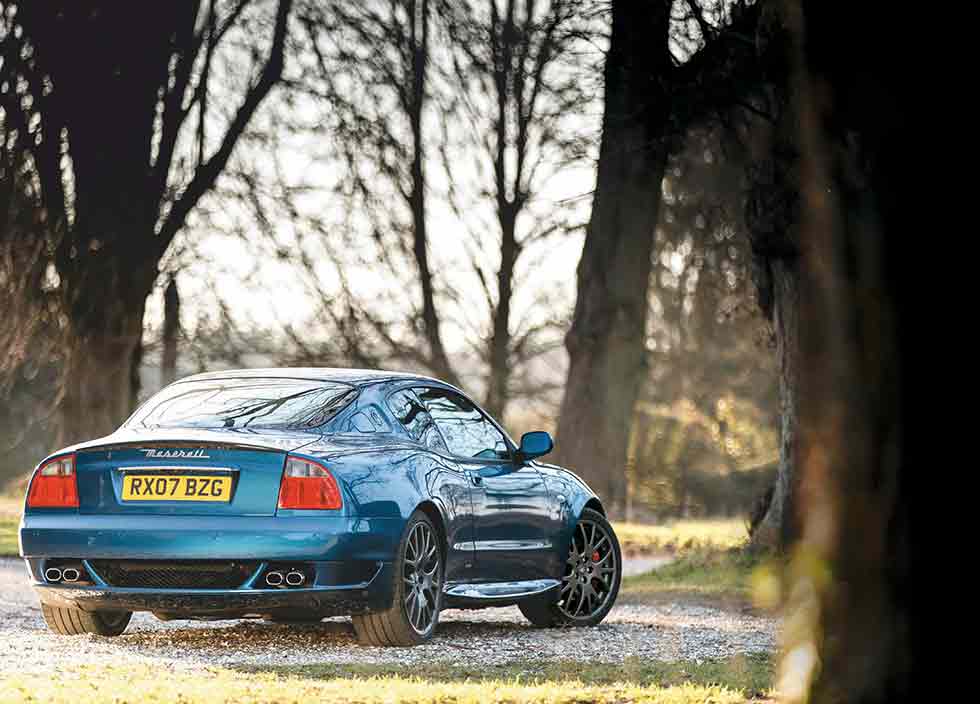
By 2002, Ferrari had been in charge of Maserati for around a decade. Heresy for some staunch Trident lovers, but the cars saw a big improvement in quality – and popularity – with the Maserati Quattroporte V and ‘Coupe’, or 4200 as it became known. At their heart were Ferrari V8s, and over the next five years the 4200 was contnually improved and honed. But even so, there was still a need for something with a bit more aggression. Enter the GranSport…
‘THE ENGINE’S GOT A BASSY HUM AT I LE AND IS SURPRISINGLY RESTRAINED’
Lower, meaner, slightly faster and a whole heap more focused than the 4200, the GranSport was highly praised by the likes of CAR and Evo. Even if it didn’t quite topple the 911 997 Carrera S as the ultimate everyday sports-car, it was a wonderfully exotic alternative.
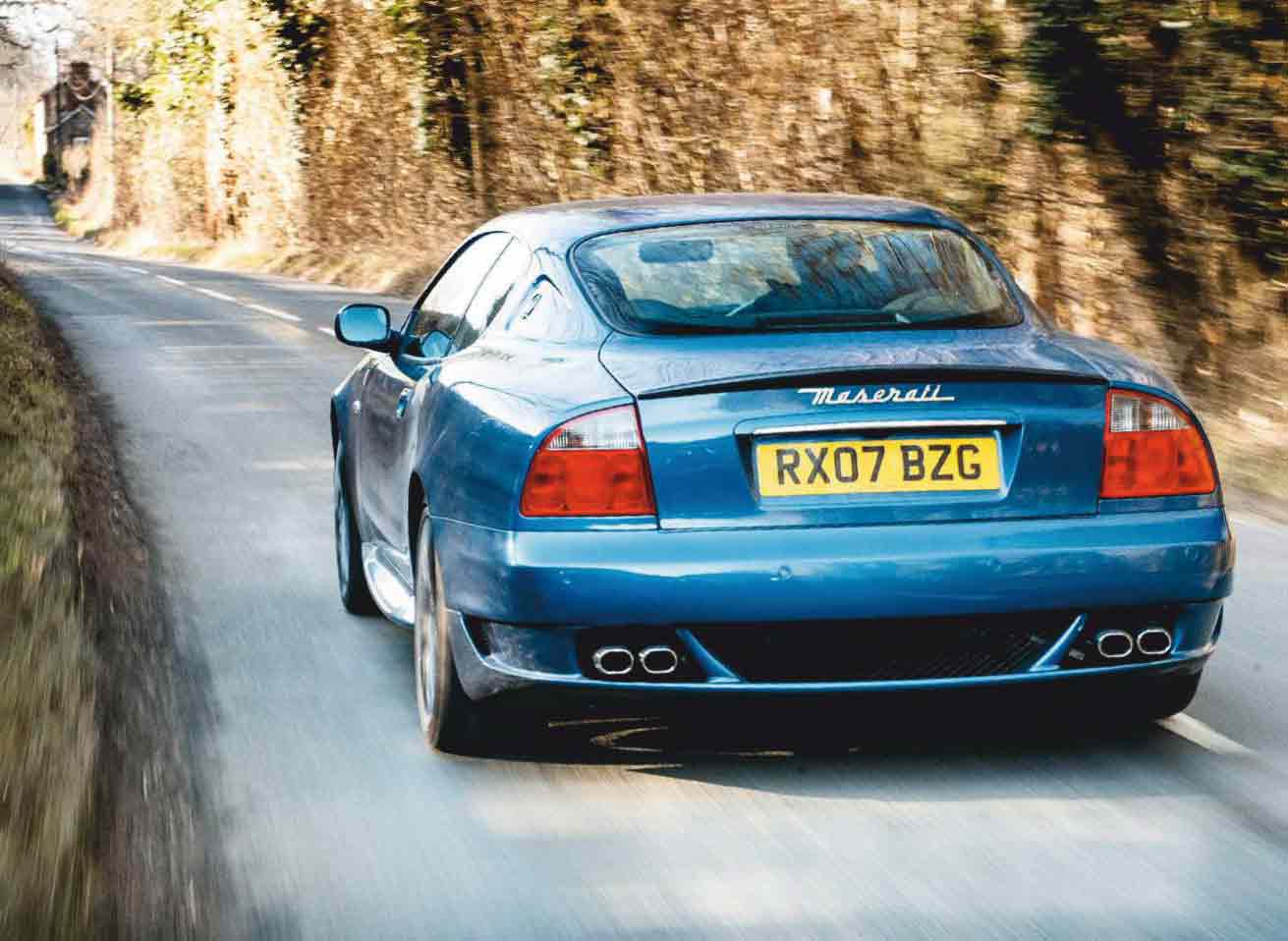
It had me sold, anyway. Confession time: I love the normal GranSport. I spend inordinate amounts of time calculating man maths with the idea of buying one, only for vicious reality to cut in. However, I’m not that much of a blinkered fan boy to ignore its issues.
The biggest one is the ride. In Normal mode it’s choppier than the Bay of Biscay ferry. In Sport mode on bumpier A-roads, it can be like being dragged behind that ferry in an iron maiden. Then there’s the single-plate Cambiocorsa F1-style paddle-shift: a bit clunky in town, and nowhere near as swift as modern auto boxes. The steering is typically Italian, light around the centre but sharp, firming up under hard load. Personally I don’t mind the last two, but it’s common on most reviewers’ gripes It could have been different: when the car was new, stylist Frank Stephenson (the man responsible for the GranSport’s more aggressive look) let slip that it could have been more hardcore overall, inspired by the Ferrari 360 Challenge Stradale, but it was thought best to make it more of a GT. Hence the steering.
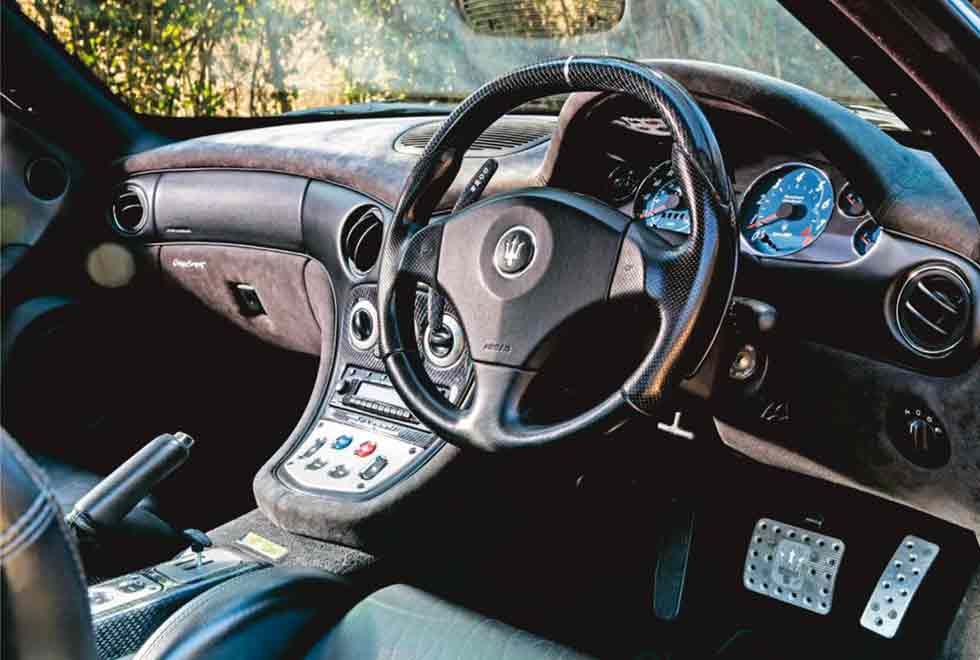
So when the GranSport MC Victory was unveiled in 2007, the spec sheet seemed a little… vague. Among the more obvious trim pieces – MC12/Enzo seats, lashings of blue-flecked carbon trim, wider side-skirts and so on, there was one interesting addition: a brand new steering rack. According to some sources close to the project, the engine had been blueprinted and upgraded using knowledge gained from the one-make Maserati Trofeo series. It all seemed a bit undersold. Just 180 were built, a handful in right-hand drive. Despite the seemingly small improvements, the MC Victory is now highly prized. This car is worth £70,000 – about what it cost new, and twice the price of a mint normal GranSport.
‘YOU CAN BRING YOUR MATES ALONG AS THE REAR SEATS ARE USEABLE’
Madness? As I arrange myself into the MC12 bucket seat (worth more than £10k alone), the interior is a step ahead of the standard car. There’s lovely alcantara and just the right amount of carbon fibre. The steering wheel feels meaty, even if the console-mounted T-shaped gear selector – common to many Ferraris and Maseratis at the time – seems to have the structural rigidity of a Twiglet. The engine’s got a bassy hum at idle and is surprisingly restrained. One click of the right up paddle – carbon, of course – flicks the car into forward motion.
Maybe it’s because this car’s fresh from a spot of fettling, or it’s got the very latest software, but the shift is noticably quicker than the standard car’s. It wasn’t brought to light in the press pack at the time, but it is interesting to note now that the gearbox (among other things) has a different part code to the standard car’s.
The one thing the press pack did mention, however, is the most important bit – the steering rack. Where before your inputs had to be more measured, more taken with faith, here the nose responds immediately to your inputs. Sometimes a little too quickly. It’s almost as if the front axle has formed a mesh with your wrists. If you can think it, the MCV can do it. Soon you feel you can push this 1630kg GT car harder, go later into corners without fear of Washing wide. There’s plenty of feel too. Where the standard car is maybe a little too light, here there’s a firmness about the information coming to your fingertips.
It’s precise and engaging. It’s a revelation, like the difference between a standard BMW M3 E46 and the CSL. Shifting on the MCV feels far quicker and more intuitive than on the Munich-machines. It’s still off the pace of more modern dual-clutch transmissions but (call me odd) I prefer the more mechanical, choppy shift – it feels like I’m involved, rather than flicking a button. Owners seem to prefer it that way too. It’s more feel some than a 997 Tiptronic, but I still want a proper manual.
The ride remains brutally hard, but because the MC12 seats pin you in place it feels correct, rather than peculiar like the standard car. Impacts resonate through the car but it never becomes unmanageable. The MCV seems to pivot around your spine as the engine starts to vocalise.
And what an engine the F136R is. Derived from the unit that powered the F430, it uses a crossplane crankshaft, rather than Maranello’s flatplane version. Mounted at 90 degrees, it’s dry sumped and revs to 7500rpm. Engage sports mode, with those valves in the exhaust open, it’s a sonorous, stirring rasp that shrieks as you encroach on 7000rpm, where it delivers its peak power.
The torque hits its peak around 4500rpm, though you feel it spooling up much lower, and it’ll scream all the way to 7500rpm – something that never gets tiresome. The MCV feels like it revs faster than the standard car too. Is it more powerful than the standard car? Subjectively it feels 10 per cent more urgent. Maybe it’s the racier seat and quicker steering rack tricking my mind, but it does feel as if there’s more under the bonnet.
The brakes – 330mm fronts, 300mm rear cross-drilled and ventilated discs – are sharp, so it’s easy to forget the car’s weight. Push harder and you really can start to feel those slight aerodynamic changes to the body take hold; in fast, accurate driving the body shifts so sharply and so quickly, it’s staggering. There’s no body roll, and the pitch that you might find in the standard car under braking and acceleration is all but gone.
Despite its more intense focus, this really isn’t a GT3 rival – at its heart this is still a GT car. Calm yourself down and the MCV proves to be just as docile as a normal GranSport. That means you can relish the elegant (if sometimes ergonomically peculiar) Enrico Fumia designed interior, and the smooth burble from the exhaust when cruising. It’s much more exotic than the equivalent Jaguar, Aston or Porsche – from the white-on-blue dials to the lashings of leather and Alcantara. It just feels special, and as a result, so do you. The best bit is you can bring your mates along too – the rear seats are actually useable.
It is a wonder why Maserati didn’t scream about this car from the rooftops. Perhaps it would have upset the Fiat Group applecart – after all, no-one can be quicker than Ferrari. It’s happened before: the eye-popping Chubasco was one of the last acts of the De Tomaso era. A Gandini designed supercar with a 430bhp version of the Shamal’s twin-turbo V8. When Ferrari nabbed the factory keys, this prototype disappeared pretty quickly. Later on in the decade, there was some consternation that the Ghibli Open Cup cars were significantly quicker than the Ferrari F355 one-make championship machines…
It will forever be disappointing that so few MC Victory editions were made. The GranTurismo, the car that replaced the Coupe and GranSport, is much bigger, far less wieldy and far less incisive. It’s the last of the era of truly sports-led GT Maseratis, and in MCV form, at its absolute peak. It’s still not the all-rounder a 997 Carrera might be, but it’s a whole heap better than the Aston Martin Vantage – more direct, less compromised, arguably better finished. Maybe a Prodrive Vantage might argue but when you add in the Maserati’s rear seats – which you don’t get in the Aston – it’s tricky to see the downsides. Well, there are two: just 180 were built, and that rarity has led to that £70k pricetag for a RHD car.
Is it worth that? Applying man maths, Porsche did an MCV thing with the 991.2, namely the GT3 Touring. You’ll need £200k. Makes the MCV seem inexpensive…
The Modern Classics view
The MC Victory really is the car the GranSport should have been from the start. The original car is a lovely thing, but the mismatch between the slightly light GT steering and the bone-shaking ride always counts against it when the GranSport’s name is mentioned in the same sentence as a 997 Carrera S, and its handling isn’t quite as sharp as that of an Aston Martin Vantage. The MC Victory dispenses with the ‘soft GT’ angle and fully embraces ‘sports GT’. It fixes all the problems, with none of the drawbacks. No, it’s not a distillation of the MC12, other than the seats. It doesn’t need to be – it stands up by itself.
Fiat Group politics meant that the GranSport MC Victory could never shine quite as brightly as it might have. As it is, we should be glad that Maserati built this at all – and if you ever get the chance to be one of the 180 lucky few, grab it with both hands. Just don’t mention it to Ferrari…
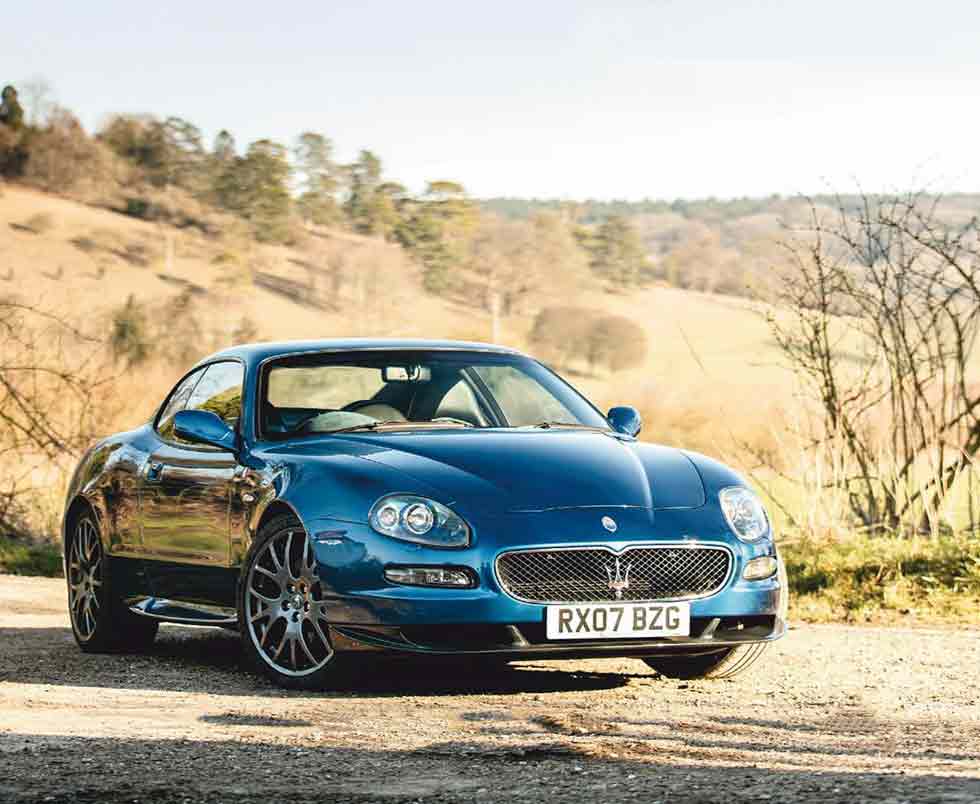
THANKS The owner, sports maserati.com, Maserati UK.
SPECIFICATIONS MASERATI GRANSPORT MCV
Engine 4244cc, 8-cyl, DOHC
Transmission RWD, 6-speed Cambiocorsa
Max Power 401bhp @ 7000rpm
Max Torque 333lb-ft @ 4500rpm
Weight 1680kg
PERFORMANCE
0-60mph 4.8sec
Top speed 180mph
Economy 16mpg
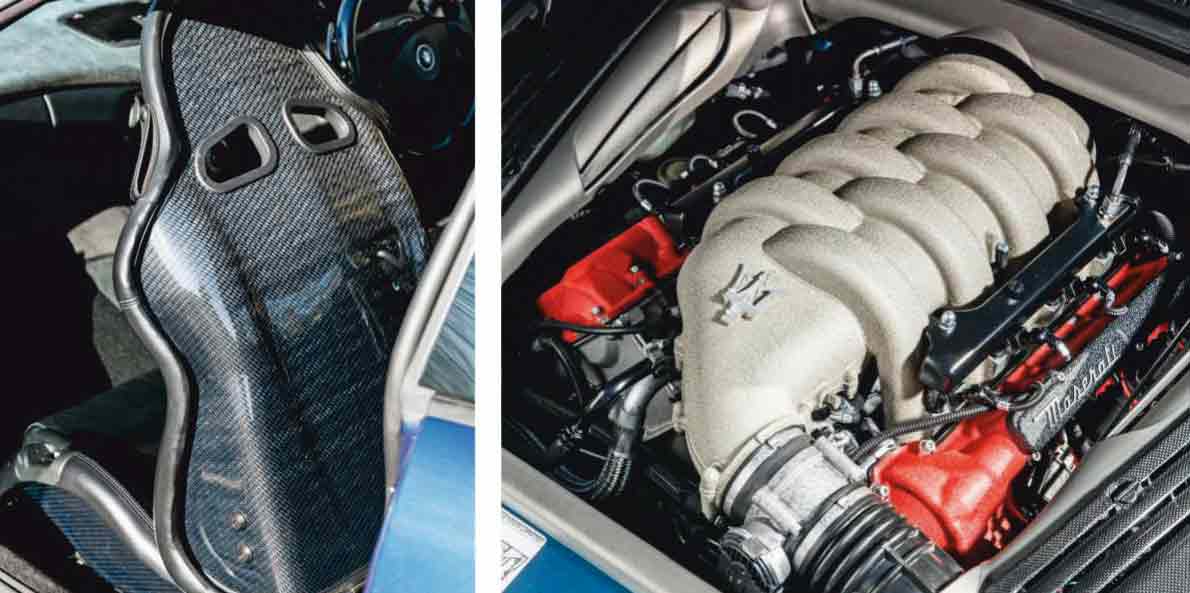

WHAT TO PAY
Concours £70,000
Good £60,000
Usable Unlikely
Project Nope
13 UK cars left
INSIDE TRACK: THE GRANSPORT BOSS SPEAKS OUT. WELL, KIND OF…
We spoke to Omar Barbieri, currently Vehicle Technical Responsible, Maserati SpA. He was the Development Manager on the GranSport project. Could he shed any light on the ‘extra tweaks’ rumours? Hmm…
Drive-My: How long did it take for The MC Victory project?
Omar: The GranSport was developed in 15months. Six months were dedicated to MC Victory development.
Drive-My: What were the project’s biggest challenges?
Omar: The MCV is a limited series of the GranSport, which was in turn derived from the Coupè, with an important series of variants and performance increases. The biggest challenge was to emphasise some of these characteristics on the MCV without losing any respect to the GranSport.
Drive-My: Was the steering rack a bespoke product, or was it sourced from another car?
Omar: The MCV rack was a specific component produced by TRW. Inside, there are some components taken from the TRW shelf, such as the nine-slot hydraulic valve.
Drive-My: What changes were made to the engine internals over the original Coupe?
Omar: The engine of the GranSport and the MCV has 401hp, an increase of 11hp compared to the Coupè, obtained by the reduction of back pressure for exhaust and intake. The shortening of the 6th ratio gave sportier performance.
Drive-My: Was a manual gearbox considered for the MCV?
Omar: The version of the electro-actuated gearbox (Maserati Cambiocorsa) guaranteed, especially in sports use, shorter shift times, greater performance and driving fun.
Drive-My: What would you have done differently?
Omar: The project has achieved all the objectives set and all the cars were sold before going into production. I would not change anything from this point of view. On the other hand, whenever a model can be rethought, it could be redone differently.
Drive-My: What’s the best bit about the MCV?
Omar: With the adoption of MC12 seats the pleasure in sporty driving became exhilarating and combined well with the details that made the model unique.






